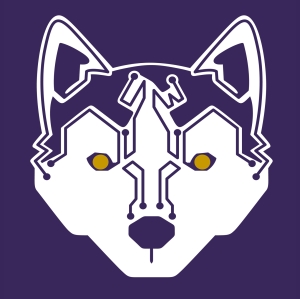University Rover Challenge team
The University Rover Challenge Team (URC team) is a dedicated group of members with the task of creating a Mars Rover to compete in the international University Rover Challenge (URC). The team is separated into subteams that have work delegated to them by team leaders.
Meeting times
| Team | Time | Location |
|---|---|---|
| General Meetings | Thu, 6-7pm (biweekly) | MEB 238 |
| Arm | Fri, 5-6:30pm | MEB 238 |
| Control Systems | Sat, 3-4pm | MEB 238 |
Arm Team
Team lead: Christian Carpio
The arm team encompasses the arm, the hand, and the scientific station of the rover. Unlike the chassis team, which is mostly mechanically oriented, and unlike the control systems team, which is more programming and electronics oriented, the arm team is the culmination of multiple engineering and science disciplines. In a sense, we have to be the "jack of all trades", and be able to work with electronics, programming, mechanics, and science.
The arm team is split into three more sub-teams:
- The arm sub-team is responsible for creating a dexterous robotic arm able to reach relatively long distances with great strength and control.
- The hand sub-team is responsible for a multi-purpose gripping hand that can manipulate a wide range of objects, as well as being responsible for an auger attachment and necessary accessories.
- The scientific station sub-team is responsible for creating an apparatus for detecting life in soil samples.
All in all, we are a very diverse bunch willing to combine disciplines to accomplish our goals.
Chassis Team
Team lead: Robert Dyer
The chassis team is the team responsible for making a driving frame that all of the other subsystems can mount to. We are in charge of integration of systems, as well as making sure all attached systems are as safe as possible from the outside world.
Our system is currently designed to travel at a maximum estimated speed of 15 mph (as compared to 2 last year), and can be dropped from the space needle and drive away like nothing happened, or so the numbers say. We designed the system this way to allow our rover to adapt to the rugged terrain it will be facing.
The terrain consists of cliffs half a meter or taller, slopes in excess of 60 degrees, and loose rocky terrain. Our design is capable of accomplishing these various terrains through a tank-tracked system.
Control Systems Team
Team leads: Jose Luis Naranjo and Collin Sutton
The control systems team is responsible for designing and implementing the electronics and code needed to make the robot run. We are essentially in charge of creating the "brains" of the robot, as well as ensuring that the robot can communicate quickly and rapidly over distances of several kilometers.
Our robot is controlled through a mixture of Arduinos and Raspberry Pis. You can examine our code on Github.
The control systems team is split up into two more subteams:
- The arm sub-team is responsible wiring together the components and implementing the code and algorithms needed to effectively manipulate the arm. This team primarily works with Arduinos, sensors, and other electronics.
- The base station sub-team is responsible for grabbing input from the human controller, and remotely controlling the robot. This team also works on networking and communications, and some video processing.
